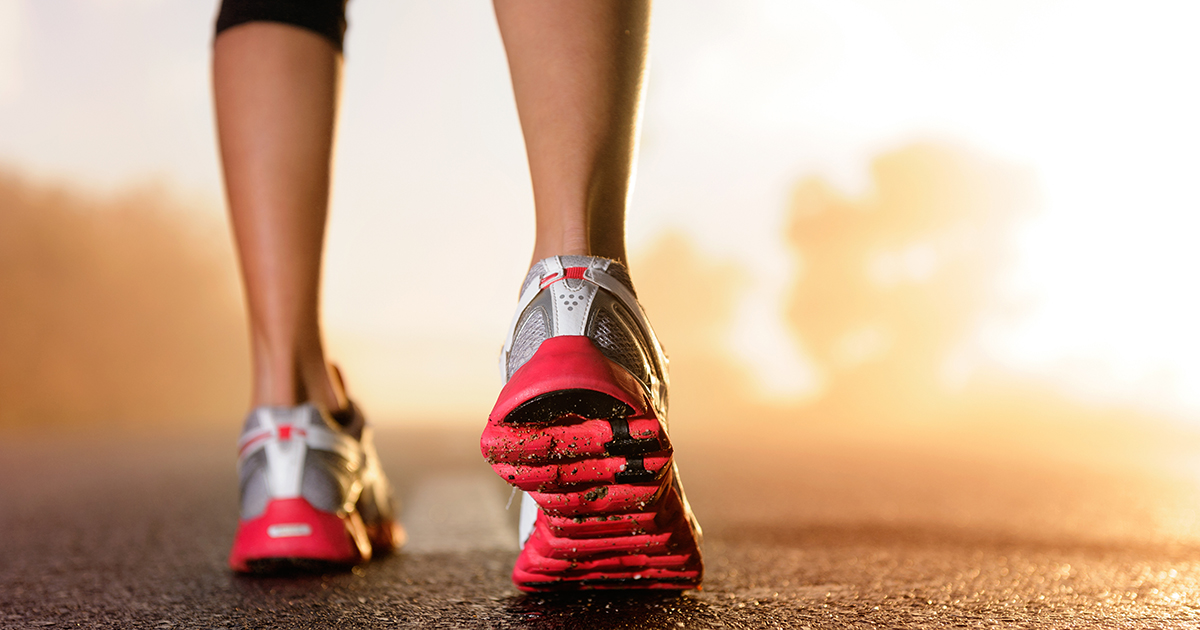
Oh, my aching feet! How to deal with foot pain
Between walking, standing and exercising, your feet can put in some long hours. So what can you do to soothe sore, tired, aching feet?
Get help for those aching feet
Some causes of foot pain can be relieved through stretching exercises, orthotics, well-fitting shoes and other preventive steps, said W. Marc Leonard, DPM, an OSF HealthCare podiatrist.
Maintain a healthy weight
“Maintaining a healthy weight is always a goal for our patients, as it reduces stress and strain on your feet in general,” Dr. Leonard said. “Obesity is known to increase the risk for diabetes, which certainly has risks associated with the feet. Our goal is to keep our patients active and healthy, which includes maintaining a healthy weight.”
A good soak
Some patients find warm water and Epsom salts soothing, Dr. Leonard said.
“I have no objections to this as long as you check the water temperature to make sure the temperature is not too hot,” he said.
A warm Epsom salt foot bath can relieve sore muscles and reduce swelling in your feet. To make an Epsom foot bath, the Farmers’ Almanac recommends adding one-half cup Epsom salt to a container of warm water large enough to submerge your feet. Soak your feet for around 20 minutes. Apply moisturizer to dry feet following the soak to prevent cracked feet and irritation.
RICE may be needed
“Icing can help in an acute injury,” Dr. Leonard said. “Many times, we will recommend RICE (rest, ice, compression and elevation) for things such as ankle sprains or foot injuries.”
This simple self-care technique helps reduce swelling, ease pain and speed up healing.
Follow these steps from the American College of Foot and Ankle Surgeons:
- Rest:Stay off the injured foot or ankle as walking may cause further injury.
- Ice:Apply an ice pack to the injured area using a thin towel between the ice and the skin. Ice for 20 minutes, then wait at least 40 minutes before icing again.
- Compression:An elastic wrap should be used to control swelling.
- Elevation: The foot or ankle should be raised slightly above the level of your heart to reduce swelling.
Stretches and exercises
A tight heel cord (Achilles tendon) goes along with one of the most common problems Dr. Leonard sees – plantar fasciitis.
“Stretching of the heel cord is beneficial to reduce the strain on the foot and help to improve heel pain,” he said. “Lunges against the wall and dropping the heel below a stair or level surface can help ease pain.”
To do the lunge exercise:
- Face a wall and raise the arms, so that the palms rest flat against the wall.
- Place one foot back, keeping the knee straight. Then bend the knee of the opposite leg.
- Keep both heels flat on the floor.
- Push the hips forward, until the Achilles tendon and calf muscles can be felt stretching.
- Hold for 30 seconds before switching sides. Repeat three times on each side.
Shoes and orthotics
“Always invest in your shoes. Spending money on a good shoe is important,” Dr. Leonard said. “Having a supportive shoe with a good insert will not only help you with your daily aches and pains but may prevent injuries from occurring.”
When choosing a shoe, find one that has a low heel and fits the foot in length, width and depth while you are in a standing position. Wearing an incorrect shoe size can impact the health of your feet, Dr. Leonard said.
“When selecting a shoe for whatever the occasion, be proactive, protective and think about being preventive,” he said. “And be cautious of high heels, flip-flops or cheap canvas shoes – they can lead to injury and they lack a lot of good general support.
“Also, if you’re going to increase your activity and start a new exercise program, be careful with your shoes,” he said. “If you have new shoes, get used to the new level of activity so you don’t create blisters and new problems. A slow increase in activity is always recommended.”
For extra support, Dr. Leonard recommends trying a good over-the-counter insole.
“There are many good inserts one can try including, PowerSteps and Superfeet,” he said. “We also make custom orthotics for patients when needed. This can give support to your foot structure and help reduce painful prominences or areas of the foot.”
Pain relievers and topical creams
Many people use acetaminophen and ibuprofen to relieve foot pain.
“Remember that ibuprofen is the only one that reduces inflammation that can lead to the current pain,” Dr. Leonard said. “Acetaminophen helps the pain but doesn’t reduce inflammation.”
There are topical medications that can be used as well.
“Some are specially compounded at the pharmacy and others are over-the-counter,” he said. “For example, Voltaren just recently became over-the-counter. It is a nonsteroidal, anti-inflammatory gel that absorbs through the skin.”
Give your feet a good look
Inspect your feet regularly for any evidence of ingrown toenails, bruising, swelling, blisters, dry skin or calluses, Dr. Leonard said.
“Always look at your feet and watch for any breakdown of skin. People with diabetes need regular evaluation, depending on their risk factors,” he said. “If you notice any pain, swelling or signs of problems, make an appointment with your podiatrist. Often, especially for people living with diabetes, what may seem like a simple issue can turn into a larger problem if you delay medical care.”
Find a podiatrist
If you are experiencing foot or ankle pain, click here to search for a podiatrist or podiatric foot and ankle surgeon.